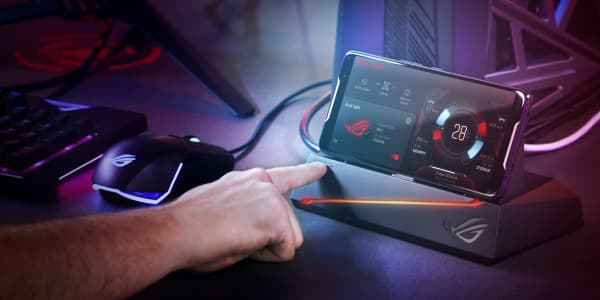Can Design Save the PC?
The increasing popularity of smartphones and tablets has prompted doomsayers to (once again) begin the deathwatch for laptops and desktops.
The consumer technology market has come a long way since August 1977, when RadioShack introduced the TRS 80, the market's first complete, preassembled small-computer system. The Level I basic came with 4K of RAM, a monitor, a cassette, and all needed cables and adaptors. It sold for $599.95.
It's not the first time since the TRS 80's heyday faded that the death of personal computers has been prophesied, but some numbers now support the negative outlook. Last year, for the first time in 11 years, PC sales were down, falling 3.5 percent, according to Gartner. And IDC doesn't expect the industry to regain that ground this year.
Don't give up on PC makers just yet, though. New processor chips give PCs extra battery life and more raw power. And manufacturers are finally breaking out of the design patterns that have been omnipresent for most of the past 15 years.
A black box or a bulky laptop is easy to find if that's what you want, but several more interesting options are available. Here are 10 ways the PC market can save itself through design innovation.
Vizio All-in-One Touch
Vizio revolutionized television with its low-cost TVs, and now it wants to have the same impact on PCs.
The company offers several devices, but none are quite as striking as its All-in-One Touch. With a 24- or 27-inch screen, the aluminum and stainless steel computer is ultrathin. It features Bluetooth-connected peripherals you won't see anywhere else, including a large track pad that takes the place of a mouse. The system also comes with a remote control for multimedia viewing.
And since it's a Vizio product, you can use it as a TV, too.
Samsung Series 7 All-in-One
Touchscreens are all well and good, but what about a PC that you can control with gestures—without touching a screen or keyboard? The Series 7 not only offers the convenience of an all-in-one computer but lets you control the cursor, adjust volume and play games via hand movements.
Available in 23- and 27-inch versions, it also features Samsung's AllShare Play technology, allowing you to stream content from a Samsung Smart TV, smartphone or camera, or stream video wirelessly from the Series 7 directly to a Samsung Smart TV.
Razer Blade
Gaming systems tend to be bulky because of the required processing and graphics power, which typically need lots of fans to stay cool.
Enter the Razer Blade. It's just 0.66 inches thick—smaller than a standing dime—but boasts some of the fastest speeds in the PC universe. Coming in at just 4.1 lbs, it's also about half the weight of its nearest competitor.
Lenovo Ideapad Yoga
Not every laptop can morph into four different form factors: a standard laptop clamshell, a tablet, a tent-style (standing on its ends) and an easel (showing the screen to onlookers across the table). The IdeaPad Yoga is flexible and simple to use.
And it works just as well as a touchscreen device as it does as a laptop.
HP Envy Rove 2
All-in-one computers are fairly innovative in and of themselves, but with the Envy Rove 2, HP has added portability.
This battery-powered device lets you carry the system around the house—though at just shy of 12 pounds, it's not meant to compete with tablets. With a spring-loaded kickstand attached to the back panel, the 20-inch system resembles a small HDTV. It's due out in July.
Commodore 64 C64x
The retro movement has worked well in fashion, so why not technology? In 2010, Commodore USA revived not only the long-dead name of the classic computer maker but also the design of the machine that started so many tech love affairs.
The designers made a few improvements, of course. There's a DVD slot (which can be upgraded to a Blu-ray drive) and a memory-card reader. It runs Windows 8 and can support up to an Intel i7 processor.
Asus Taichi 21
Giving presentations on a laptop has typically meant everyone huddling around one side of the table. The Taichi 21 fixes that problem by featuring two screens: a forward-facing one on the back and another one the user can view simultaneously.
Don't have a presentation? That second screen lets you use the closed ultrabook as a tablet. If you're not a fan of touch-typing on a screen, that outer screen accepts input via a stylus.
Acer Aspire R7
Flexibility is the name of the game for laptops—and the Aspire R7 certainly checks that box. It's a touch-enabled notebook whose screen can be used traditionally, folded over to act as a tablet and twisted to act as display during presentations.
This Acer device is getting more buzz these days thanks to the auction of a limited-edition version tied to this summer's Star Trek film. With three days left in the auction, bidding for the sole machine stood at $7,600.
Macbook Air
Apple may be leading the charge to a tablet world, but it's not ignoring traditional computers. The Macbook Air was largely responsible for the movement to ultrathin laptops, and Apple still leads the pack.
The design hasn't changed notably in three years, but the company regularly upgrades the internal components. This year's offerings were among the first laptops to use Intel's fourth-generation Core processor family, which provides significantly improved battery life. The 13-inch model boasts run times of up to 12 hours—a five-hour improvement over its predecessor.
HP Envy x2
Can't decide between a tablet and a laptop? The Envy x2, a so-called hybrid, functions as both.
As a laptop, it's thin and lightweight with a comfortable keyboard and a staggering battery life of 10 to 15 hours (thanks to HP's placement of batteries in both the tablet-screen and keyboard dock). And if you prefer a Windows 8 tablet from time to time, the screen can easily be detached and used on the go.




